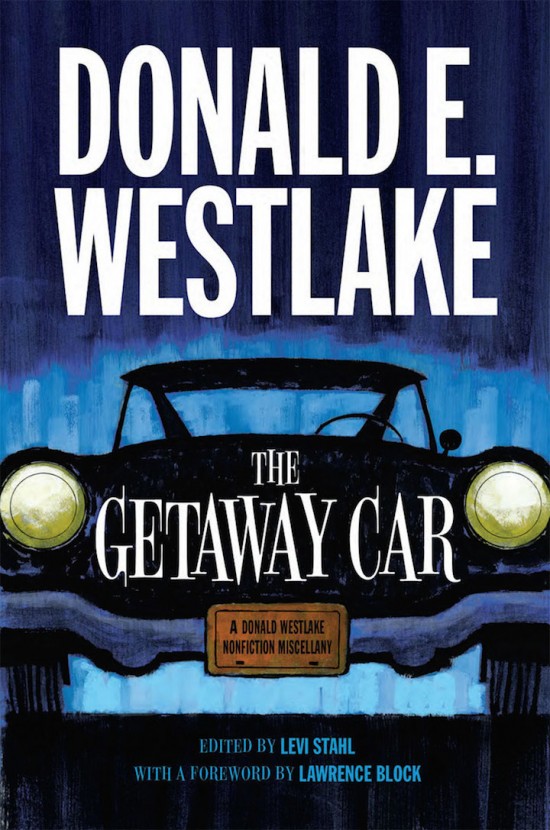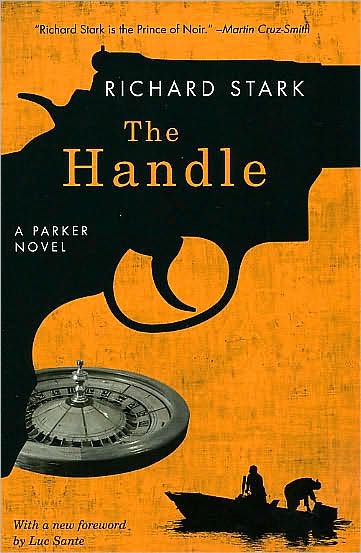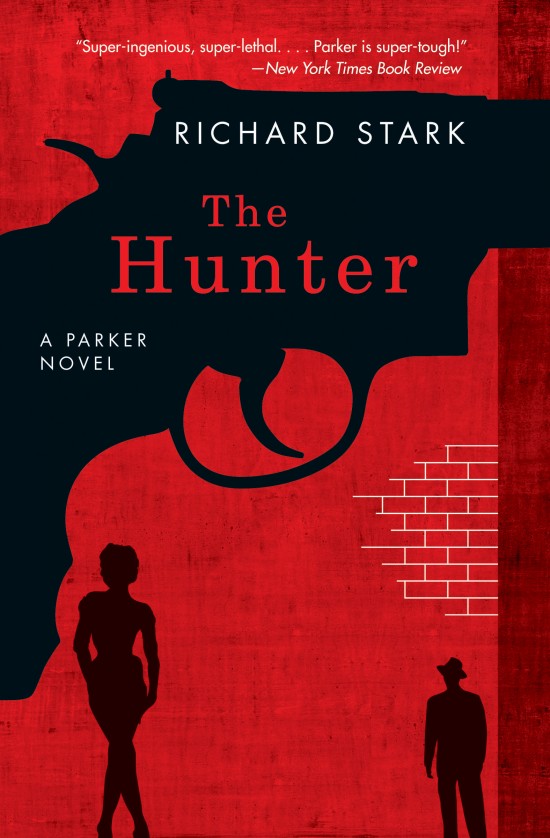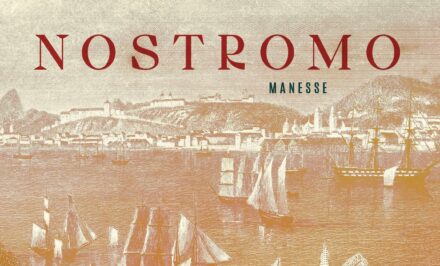With Parker, Donald E. Westlake Pulled Off Crime Fiction’s Most Spectacular Magic Trick
When the COVID-19 pandemic began, I found myself re-reading the Parker novels, which Donald E. Westlake wrote under the pseudonym Richard Stark. There was comfort in most of the novels’ repetitive plots: Parker, the master thief, plans an elaborate heist alongside some other criminals; the heist inevitably falls apart; Parker survives and claims the money (usually killing a lot of people in the process).
To be fair, not every Parker novel follows that exact pattern—but they all embrace noir clichés in their own unique ways. For example, Slayground (1971) spends most of its page-count with Parker trapped in a shut-down amusement park, surrounded by corrupt cops and gangsters (it’s a lot like “Die Hard,” oddly enough). The Outfit (1963) plays more like a revenge thriller, with Parker trying to settle a score with a multi-state crime syndicate once and for all.
When you read these books in order, you realize that Westlake/Stark pulled off an incredible magic trick. Parker largely remains a cipher throughout the series, without much backstory. You never even learn his full name, or why he decided to become a thief, or if he’s driven by some kind of deep-seated trauma. That lack of detail would doom most writers trying to craft a long-running series around a single character—and yet Westlake/Stark pulls it off magnificently.
Subsequent authors have followed Westlake’s template with mixed success. Perhaps the most notable is Lee Child, whose Jack Reacher (25 novels and counting) often ends up ensnared in a similar scenario: Trapped in a small town, he uncovers a vast conspiracy involving some combination of crooked businessmen, terrorists, or former military sorts. Reacher kills villains, rights wrongs, and then promptly leaves town again. However, Child also saw fit to give Reacher an extensive backstory and family connections; the big guy is human in ways that Parker is not.
So what lies at the root of Parker’s appeal? I’ve thought about it, and I’ve come to the conclusion that it’s all about Parker’s work. A substantial percentage of each title’s page-count is devoted to Parker discovering his next heist, negotiating with partners, arranging for equipment, and figuring out how to most efficiently overcome any security or resistance. It’s familiar and oddly comforting, and close enough to the average reader’s experience (who hasn’t tried to negotiate with odd co-workers?) to generate a connection even with a borderline-sociopathic master thief.
Take Slayground, in which Parker is besieged in an amusement park. Most of the book is given over to Parker’s preparations for the gangsters’ eventual assault on the property. He walks through the rides and attractions, testing and adjusting; in these passages, divorced of broader context, he might as well be a maintenance worker on his rounds:
“He had to work by flashlight, removing the wiring from several of the lights and fastening it carefully elsewhere. When he was done, he didn’t turn the display back on. He untied his boat, got back into it, and rode it the rest of the way through the ride. Since in stopping the boat he’d stripped it of its connection to the track, he was borne along by the water flowing through its winding metal trough inside the building, down to the end of the ride.”
Despite his literary reputation as a ruthless killer, Parker is an observer most of the time. In Backflash, he spends a big chunk of the book figuring out the vulnerabilities of a riverboat casino—again, with a keen focus on detail:
“Parker chose a Friday night trip, the same as the night they’d be taking it down, to get a feel for the place. The ship was full, action in the casino was heavy, and the people having dinner in the glass-walled dining rooms to both sides of the casino as it sailed past the little river towns were dressed up and making an occasion of it. The sense was, and it was palpable through the ship, this was a fun way to spend money. Good.”
Jack Reacher, in many of his novels, follows a similar template. In “The Hard Way,” Reacher helps a shady military contractor whose family has supposedly been kidnapped, and he spends much of the novel’s first two-thirds walking around Lower Manhattan, trying to determine the timing and nature of the kidnappers’ scheme (not all the books take place in a small town). There are frequent digressions into Reacher’s craft. His job is an unusual one, and how he conducts it often overshadows the actual plot or villains of the piece (especially when he overwhelms all opposition relatively quickly).

The imitators of Parker and Reacher (and they’ve been frequent over the years) have generally leaned into the violence, sometimes resulting in excessive displays of testosterone that are inadvertently funny. There’s a good, self-conscious example of this in the work of Stephen King: Alexis Machine, the Parker-like character created by author Thaddeus Beaumont in The Dark Half (who’s writing under the pseudonym George Stark, echoing Westlake’s pseudonym Richard Stark—there are layers upon layers here), is the perfect example of such a character taken to the wrong extremes. In the fragments of Beaumont-as-Stark’s manuscripts scattered throughout King’s novel, Machine growls out tough-guy pronouncements and threatens folks with a straight razor, and it’s all so over-the-top you can’t help but laugh.
In Parker’s case, Westlake avoids tumbling into this trap by having his thief remain taciturn and efficient. Violence is just another tool in Parker’s process, whether he’s crashing an armored car or shooting a double-crossing partner in the back. This detailed focus on “work,” along with the comforting repetition of the novel’s plots, makes him an enduring figure. He’s going to get the job done—you’re just along for the ride.

Nick Kolakowski is the author of „Maxine Unleashes Doomsday“ and „Boise Longpig Hunting Club“ as well as the Love & Bullets trilogy of novellas. His noir fiction has appeared in Tough, ThugLit, Mystery Tribune, Plots With Guns, and various anthologies. Brandnew: his „Payback is Forever“ (Shotgun Honey 2022), inspired clearly by the novels of Richard Stark. Our review here (in German).
Nick Kolakowski, geboren 1980, aufgewachsen in Washington. D.C., hat Geschichte in Chicago studiert. Er schreibt Romane, Kurzgeschichten, Lyrik und Essays, viele davon über Crime Fiction und verwandte Themen. Seine Texte erscheinen u. a. in der Washington Post, in Shotgun Honey, North American Review, The Evergreen Review, Rust & Months. Kolakowski lebt in New York City. Eine Besprechung des von Parker inspirierten „Payback is Forever“ in unseren Bloody Chops.

Bei Suhrkamp auf Deutsch: Love & Bullets.
His essays with us.
His column „Gunsmoke“ with us:
4 Ways Tarantino’s “Once Upon a Time in Hollywood” Novel Stands Out From the Film.
On „Heat“: Manhunter Takes Down Thief: How Michael Mann’s Early Career Led to ‘Heat’
The Most Honest Nihilism – on „The Way of the Gun“
No, Time to Die – The latest James Bond movie digs into the fatalism at the iconic spy’s core.
Cormac McCarthy’s Overlooked Masterpiece? – „The Councelor“
„Nightmare Alley“ – How Guillermo del Toro’s Film Alters a Masterpiece Noir Novel
David Cronenberg – The Carnal Crime of “A History of Violence” and “Eastern Promises”

























